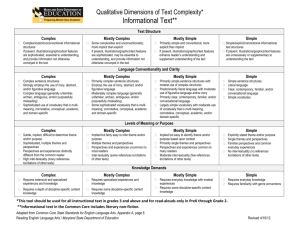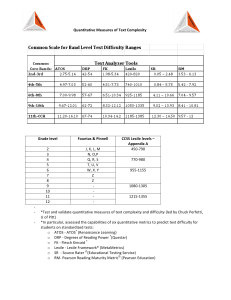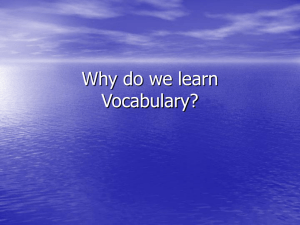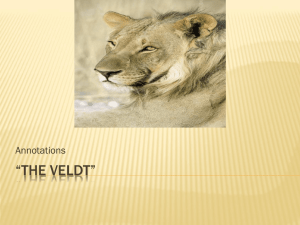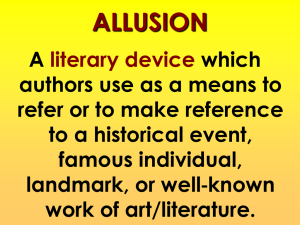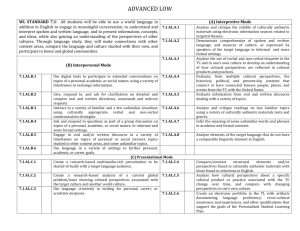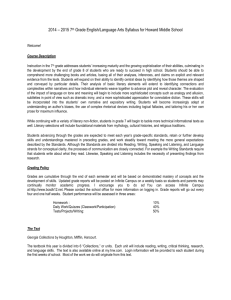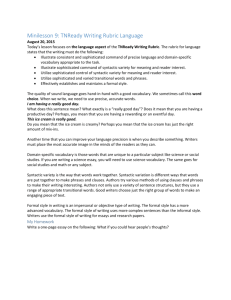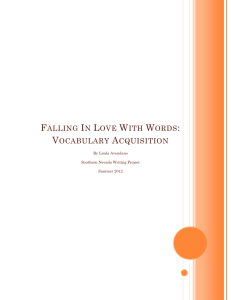Qualitative Dimensions of Text Complexity* Literature Text Structure
advertisement
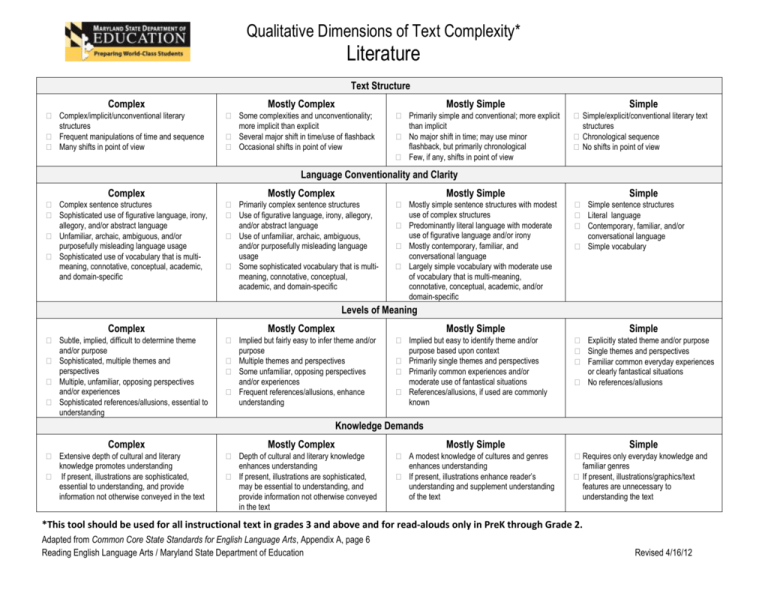
Qualitative Dimensions of Text Complexity* Literature Text Structure Complex Mostly Complex Mostly Simple Complex/implicit/unconventional literary structures Frequent manipulations of time and sequence Many shifts in point of view Some complexities and unconventionality; more implicit than explicit Several major shift in time/use of flashback Occasional shifts in point of view Primarily simple and conventional; more explicit than implicit No major shift in time; may use minor flashback, but primarily chronological Few, if any, shifts in point of view Simple Simple/explicit/conventional literary text structures Chronological sequence No shifts in point of view Language Conventionality and Clarity Complex Mostly Complex Mostly Simple Complex sentence structures Sophisticated use of figurative language, irony, allegory, and/or abstract language Unfamiliar, archaic, ambiguous, and/or purposefully misleading language usage Sophisticated use of vocabulary that is multimeaning, connotative, conceptual, academic, and domain-specific Primarily complex sentence structures Use of figurative language, irony, allegory, and/or abstract language Use of unfamiliar, archaic, ambiguous, and/or purposefully misleading language usage Some sophisticated vocabulary that is multimeaning, connotative, conceptual, academic, and domain-specific Mostly simple sentence structures with modest use of complex structures Predominantly literal language with moderate use of figurative language and/or irony Mostly contemporary, familiar, and conversational language Largely simple vocabulary with moderate use of vocabulary that is multi-meaning, connotative, conceptual, academic, and/or domain-specific Simple Simple sentence structures Literal language Contemporary, familiar, and/or conversational language Simple vocabulary Levels of Meaning Complex Mostly Complex Subtle, implied, difficult to determine theme and/or purpose Sophisticated, multiple themes and perspectives Multiple, unfamiliar, opposing perspectives and/or experiences Sophisticated references/allusions, essential to understanding Implied but fairly easy to infer theme and/or purpose Multiple themes and perspectives Some unfamiliar, opposing perspectives and/or experiences Frequent references/allusions, enhance understanding Mostly Simple Implied but easy to identify theme and/or purpose based upon context Primarily single themes and perspectives Primarily common experiences and/or moderate use of fantastical situations References/allusions, if used are commonly known Simple Explicitly stated theme and/or purpose Single themes and perspectives Familiar common everyday experiences or clearly fantastical situations No references/allusions Knowledge Demands Complex Mostly Complex Mostly Simple Extensive depth of cultural and literary knowledge promotes understanding If present, illustrations are sophisticated, essential to understanding, and provide information not otherwise conveyed in the text Depth of cultural and literary knowledge enhances understanding If present, illustrations are sophisticated, may be essential to understanding, and provide information not otherwise conveyed in the text A modest knowledge of cultures and genres enhances understanding If present, illustrations enhance reader’s understanding and supplement understanding of the text Simple Requires only everyday knowledge and familiar genres If present, illustrations/graphics/text features are unnecessary to understanding the text *This tool should be used for all instructional text in grades 3 and above and for read-alouds only in PreK through Grade 2. Adapted from Common Core State Standards for English Language Arts, Appendix A, page 6 Reading English Language Arts / Maryland State Department of Education Revised 4/16/12
